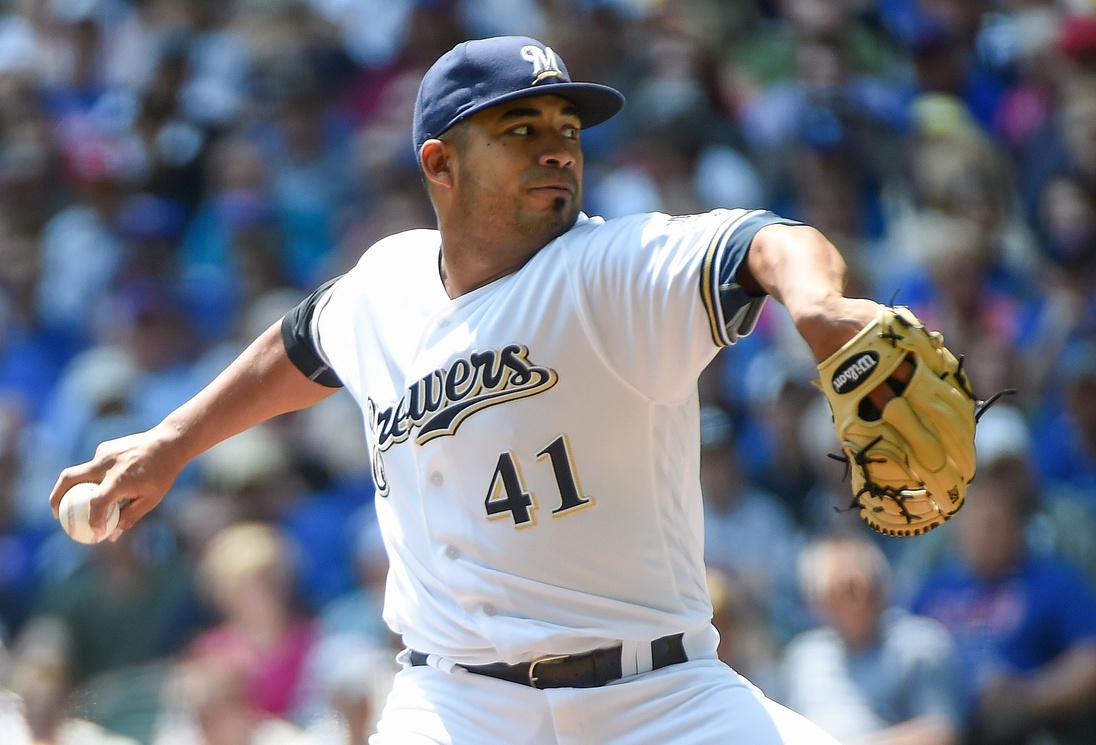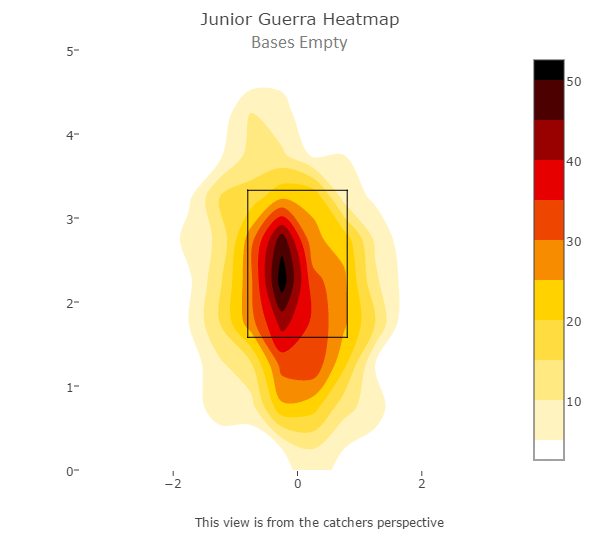Junior Guerra still feels…surreal. That a 31-year-old independent-baller with 3.3 innings pitch in the major leagues became a dependable starting pitcher is bizarre enough. That he’s worked an ERA of 2.85 over his first 15 starts — better than Jon Lester, better than Chris Sale, better than Max Scherzer — leaves me speechless. There are underdogs, there are rags-to-riches tales, and then there’s Guerra.
However, I’ve instinctively tried to poke holes in Guerra’s breakout. And I have found some red flags — such as Guerra’s 3.71 DRA, which is considerably higher than his 3.04 actual RA. (Brilliant detective work, no?) The usual suspect, batting average on balls in play, looks like a fluke: Guerra’s .240 BABIP doesn’t sync with his 34.6 percent hard-hit rate. Does that mean the magic will soon run out?
Not necessarily. Guerra’s also sequenced his pitches well this year, as his 79.0 percent strand rate evidences. While high strand rates will regress toward the mean most of the time — since most pitchers will fare worse with runners on base — some hurlers, one way or another, can consistently leave runners on base. Guerra has embodied this phenomenon through his 94.7 innings in 2016.
With the bases empty, Guerra has been no slouch, as batters have tallied a .197/.278/.366 triple-slash against him. But he’s really stepped up once someone has reached base, when he’s held opponents to a batting line of .215/.283/.302. That means his OPS is 59 points lower with men on base — for comparison’s sake, the MLB-wide OPS this season has risen by 29 points when runners are on.
Guerra strikes out slightly fewer batters with men on base (20.6 percent) than with the bases empty (21.5 percent); he’s also lowered his walk rate by a bit, from 9.3 to 7.8 percent. The biggest change has come with batted balls: Guerra’s seen his BABIP rise from .226 to .263, while his home run rate has plummeted from 3.0 to 1.4 percent. Essentially, Guerra has sacrificed some singles to cut down on his long balls.
Batted-ball outcomes can vacillate a great deal in small samples, so it’s not always safe to trust them. The batted balls themselves, on the other hand, often elucidate a great deal, and that’s the case here. With no one on base, Guerra has a mediocre 43.5 percent ground ball rate. After someone has gotten on, though, he’s become a ground baller — 51.0 percent of the balls put in play have been on the ground. In addition to reducing his home run rate, this has helped Guerra turn two: Despite ranking 43rd in the majors with a 48.3 percent ground ball rate overall, Guerra has yielded double plays in 16.9 percent of his chances, which places 22nd.
What explains the jump in grounders? Part of it may stem from Guerra’s profile. Back in 2011, when researching for the metric SIERA, Matt Swartz noticed that high-strikeout pitchers tend to get more ground balls in double-play situations. Swartz wrote that “[s]ituational pitching is a skill when you control the strike zone”; perhaps this talent is what has aided Guerra.
But Guerra doesn’t punch out an incredible amount of hitters. To get those grounders, and prevent those runners from scoring, he’s done something differently — he’s changed his pitch location immensely:
That’s a pretty massive shift downward, and as you’d suspect, it lends itself to ground balls. This season, every pitch in Guerra’s arsenal — his four-seamer, sinker, splitter, and slider — has a higher ground ball rate with runners on. Since grounders can’t leave the yard, this has all but eliminated multi-run homers; since the Brewers generally field ground balls cleanly, this has allowed Guerra to rack up double plays. Together, these have allowed Guerra to work his way out of countless jams.
Tonight, Guerra takes the hill against the Pirates, trying to keep his incredible season going. He probably won’t sustain a BABIP this low for the rest of the year, but he may continue to escape trouble. The veteran righty has put together a marvelous campaign for the Brewers, who have desperately needed it. Whether or not he sticks around for the next Brewers contender, his strong 2016 — bolstered by his ability in the clutch — will live on.

